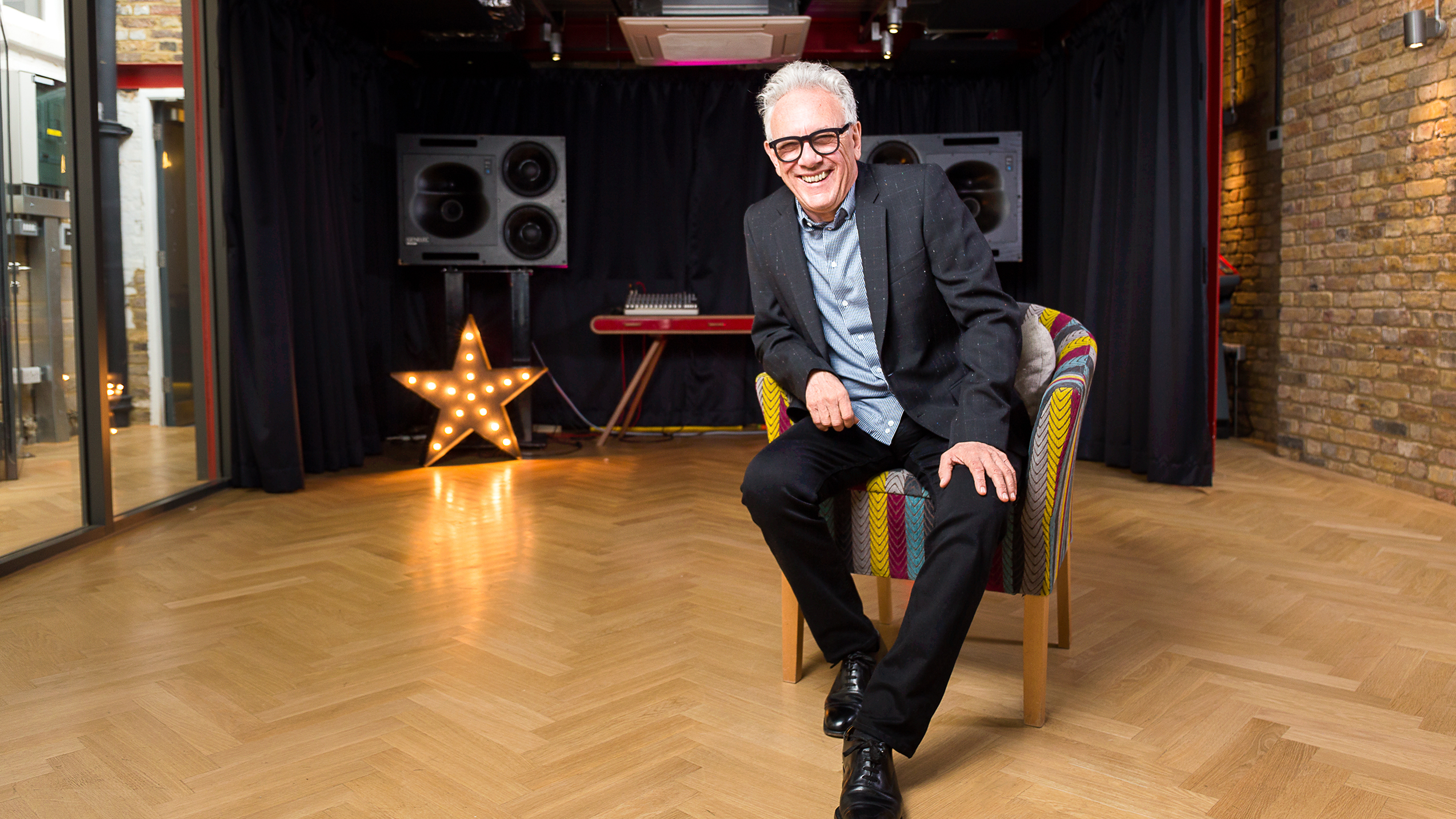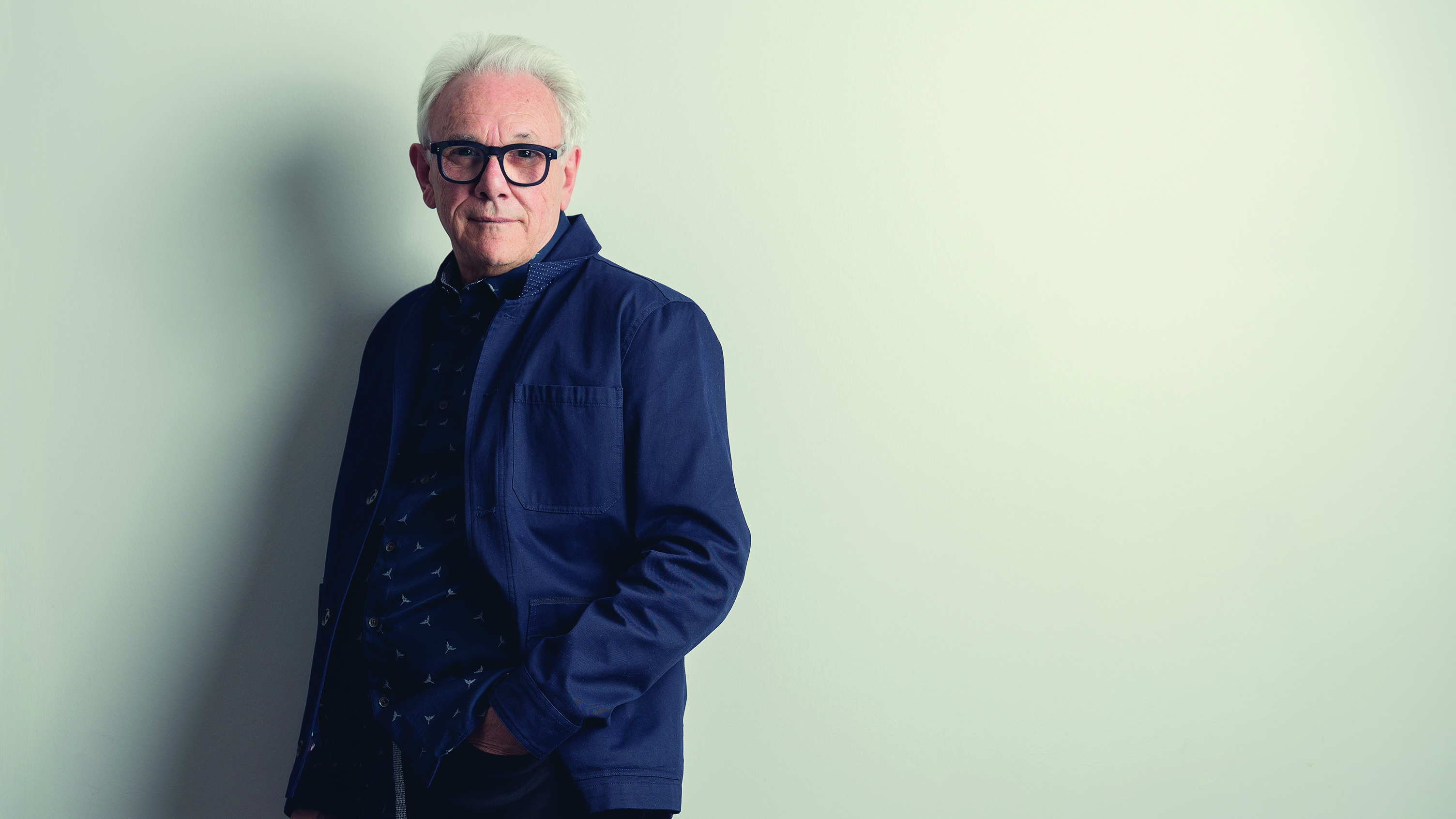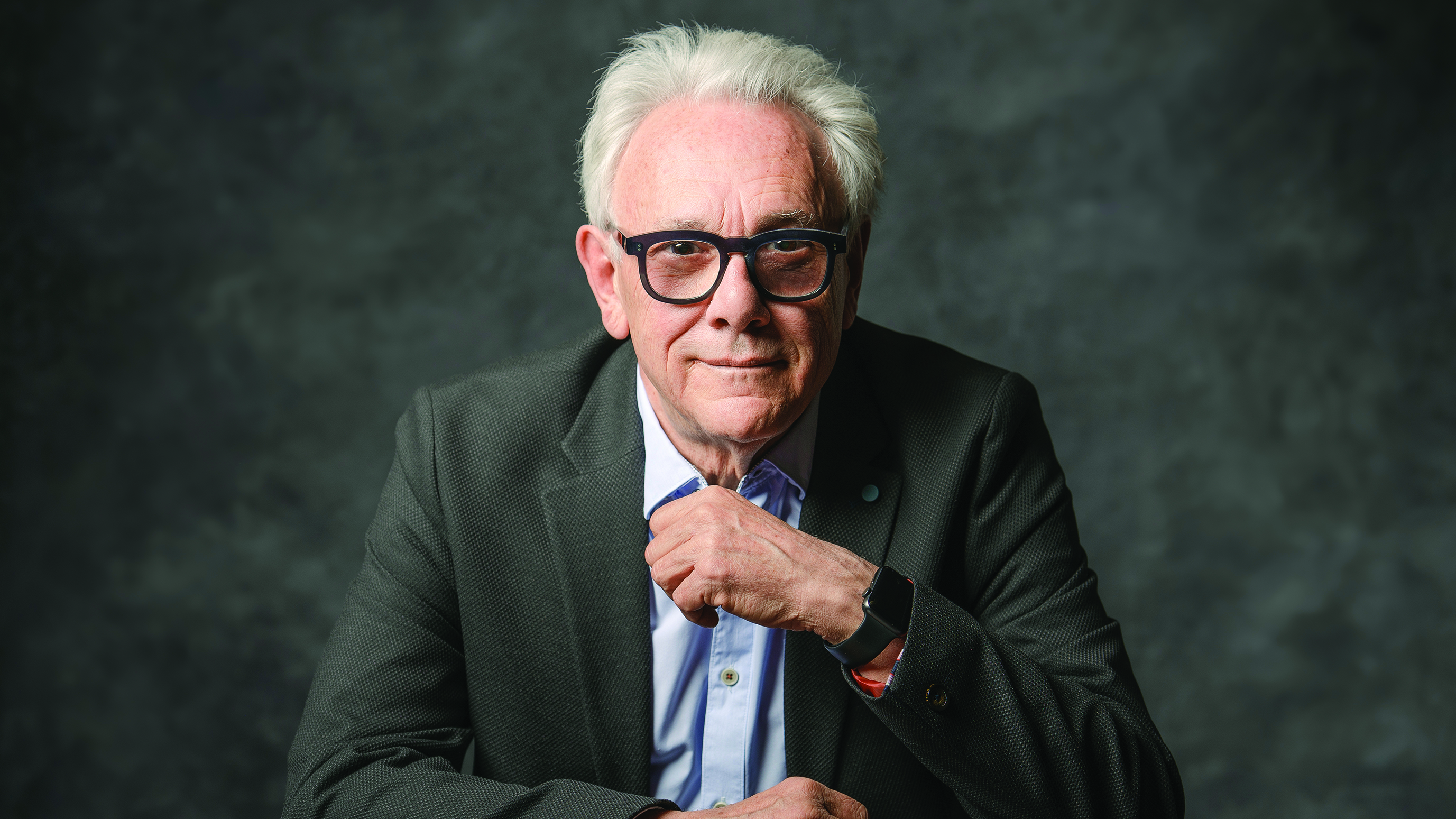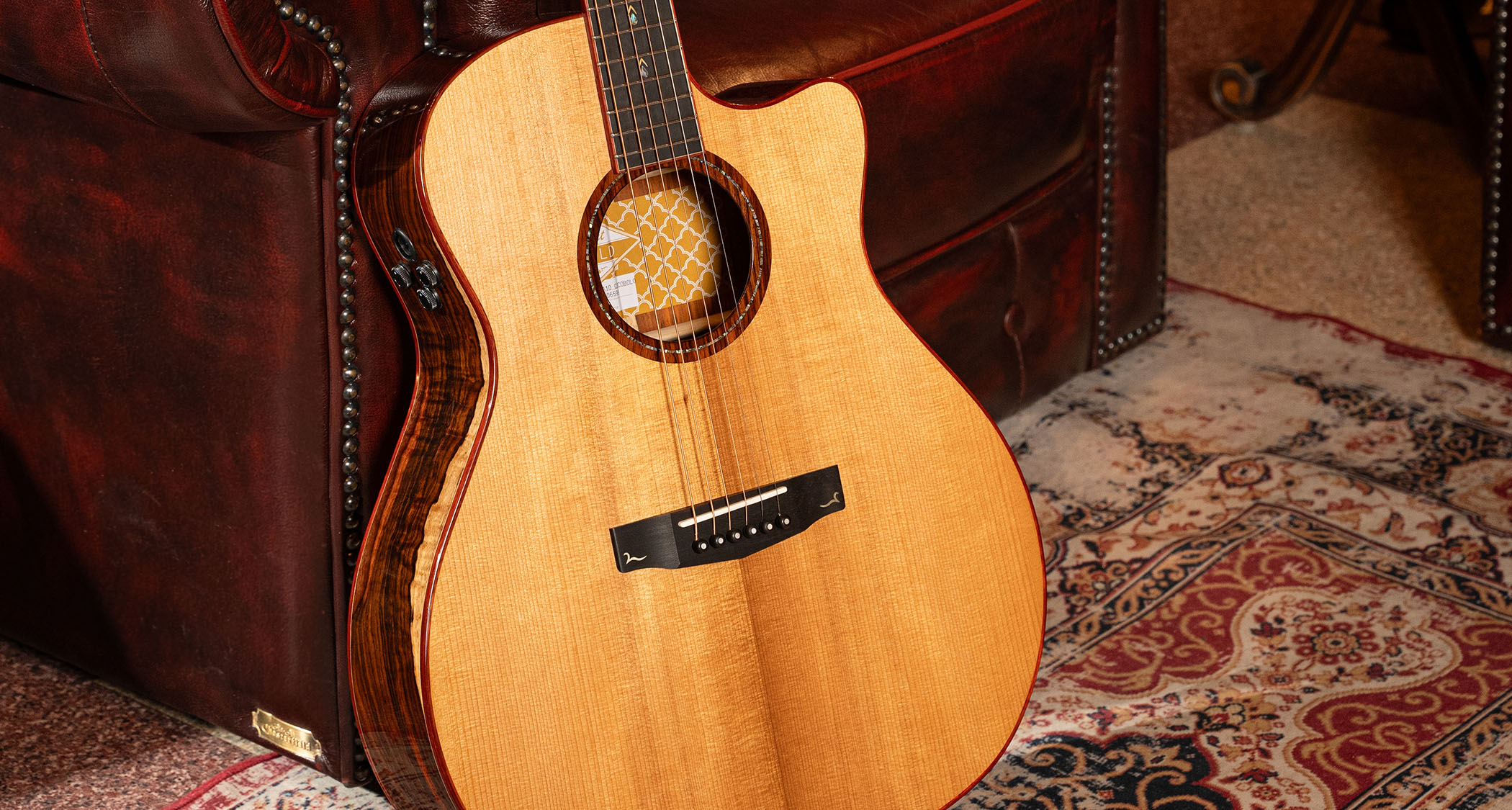Trevor Horn: “I’m just an old muso who likes playing and programming”
The former Buggles man and chart-topping producer talks synths, studios and re-imagining his ’80s hits

The 1980s was a golden age for music technology, popularising the evolution of analogue synthesis and giving rise to the birth of digital recording. At the heart of that groundbreaking revolution in sound was producer Trevor Horn.
In September 1979, Horn’s chart topping single ‘Video Killed the Radio Star’, with fantasy band The Buggles, helped pave the way for his electronic pop successors. He then moved into the production hot seat, where he used the latest innovative technologies to evolve and, occasionally, break artists such as Dollar, ABC, Spandau Ballet, Grace Jones and Frankie Goes to Hollywood.
By 1983, Horn had set up the maverick Zang Tuum Tumb label, while his band The Art of Noise began to remap the synth pop landscape once more, this time using the latest digital sampling technology.
Horn established the state-of-the-art SARM West Studios in London and, moving into the ’90s, produced the likes of Pet Shop Boys, Tina Turner, Tori Amos, Cher and Seal. Last year, Horn spent time kitting out his home studio in order to go back to his roots by creating an album of orchestral re-workings of ’80s hits.
You woke your parents at 4am in the morning to tell them you want to pursue a career in music. What precipitated that momentary excitement?
“I had a job as a trainee cost accountant, but was playing in a band five nights a week. I was riding home on my scooter from seeing this girl, and suddenly thought the only thing I’m interested at working in is music. I said to my dad, ‘I think I’ll turn pro,’ and he said ‘You’re not good enough.’ One evening I just thought, fuck it, woke them up and said, ‘Sorry, I’ve made my mind up – I’m going to be a musician.’ I knew I’d be a failure at anything else.”
You worked as a session musician in the ’70s, but what sparked your interest in music production?
Get the MusicRadar Newsletter
Want all the hottest music and gear news, reviews, deals, features and more, direct to your inbox? Sign up here.
“I worked on LPs when they were made in one day – when studios still had a red light. I loved the sound of control rooms and tried being a songwriter, but gave up. When I was 25, I’d made quite a bit of money playing in Ray McVay’s Big Band, which was a nightmare gig but I got a load of recording equipment, went up to Leicester and bought a studio. Nobody came in, so we started organizing sessions. Leicester City FC’s ‘This is the Season for Leicester’ was the first record I officially made, then somebody told me I was a record producer and I thought, ‘Wow, I am, and it’s what I want to do.’”
And from there it grew organically?
“Nooooo! Back in the day, you couldn’t get into a recording studio for less than £30-40 an hour, and I was earning £55 a week. I only ran the studio for a year, and then I bailed out and came back to London. I was working in another band doing cover albums – Brian Ferry stuff or whatever was in the charts, then I started producing demos for a music publisher. I did that for five years, but somewhere along the way I heard Kraftwerk and that completely changed my view about production. ‘Man Machine’ was the one for me, and my other favorite was Grace Jones’ ‘Warm Leatherette’. I was also into JG Ballard and novels like Crash. The Buggles was meant to be a fantasy group invented on a computer – then real life came crashing in.”
Did you have any understanding of what gear Kraftwerk were using at that point?
“No, I didn’t have a clue. We thought it was a sequencer, but there were very few available at the time. I couldn’t afford to buy one and was still learning the studio. I started on an 8-track and moved to 16-track, where there’s this whole protocol you have to learn.”

How did you facilitate a modern sound on such a low budget?
“In 1978, the idea that you could manufacture drums seemed interesting to me, so I sort of made my own drum machine sounds using reels of tape. I could never afford string players, so we’d just use whatever keyboard did the best strings. Everyone takes it for granted, but when the Polymoog came out it was a huge revelation. We had one of the first that came into England; it was a bit unstable, but sounded terrific.”
Did you envisage the popularisation of electronic music?
“I imagined a future world where pop music was Kraftwerk, and thought it was an exciting prospect. By the time we got to The Buggles, we were getting really good. Geoff Downes was a brilliant keyboard player – you’re not in a band like Yes if you can’t play keys! Geoff and I put everything into that record.”
The Buggles album The Age of Plastic involved a lot of experimentation with studio equipment…
“We were always trying to get things to sound different – especially drums. Don’t forget the album was written in 1979 and the only drum machine available was the Korg MiniPops Junior, which did sound rhythms for hotels. The track ‘Living in the Plastic Age’ was the MiniPops Junior put through a flanger. Geoff and I were awarded ‘Shits of the Year’ at Trident Studios because we were moaning that the old Trident desk was too noisy and we couldn’t get that bright ’80s sound we were after. Sequencers didn’t come in until the following year, so we used to imitate them. We tried renting an Oberheim for a couple of days, but it cost £75 and we couldn’t get anything out of it. Moreover, we couldn’t sync it to anything.”
Did you eventually find producing for others more interesting than being at the front end of things?
“Yes, because after The Buggles I joined Yes for a year, made an album and toured America and England. That wasn’t for me, because I wasn’t really good enough and studios were just starting to get really exciting. I’d bought a TR-808 and a set of Simmons drum modules. Dave Simmons came over, modified the modules and put a set of triggers on the side of the 808 so I could use a cowbell to trigger the bass. I also had a very rudimentary sequencer made by Roland that was dead simple but really effective, and made it CV and gate into the Minimoog, which made a great sound. It was a terrible pain in the arse to program, but it was really tight. I made the Dollar records and ABC’s ‘Poison Arrow’ with it. Then I bought a Fairlight – £18,000’s worth.”
Why buy one rather than hire one?
“If you hire one you’re only going to get into the first level. I just knew there was something in it and always remember the day I signed the cheque because Brad Naples, the head of New England Digital, called me. They’d just made the Synclavier and he said I’d regret buying the Fairlight because it’s a gimmick and if I wanted a proper, scientific instrument I needed to get a Synclavier. I said, ‘Forgive me Brad, but all I’m doing is making pop records.’ I did buy a Synclavier a few years later, but the Fairlight was great.”
What excited you about the Fairlight?
“It developed. At one point, J. J. Jeczali from Art of Noise worked it and spent most days in the back room of SARM East Studios putting stuff into it. Working with Dollar was the first time I really got excited because we had all these background vocals to do on ‘Give Me Back My Heart’ and we put them into the Fairlight. I did 16 takes of Theresa Bazar singing ‘la,’ played them in and the Fairlight gave them a really weird sound. There’s lots of Fairlight on ABC’s Lexicon of Love too – sound effects like cash registers and weird noises. I tried to make it so there wasn’t a dull or a sloppy moment, but ABC’s lyrics also led you down certain soundscapes.”
Which brings us nicely to the mid-’80s and Art of Noise, which in many ways heralded the digital revolution?
“Art of Noise was just a studio team messing about. It started off with a couple of drum loops, then Paul Morley came up with the name and we suddenly had this band. We grabbed stuff from places and had loads of ideas from going around the world with Malcolm McLaren and working on Duck Rock. I remember making the first 12", ‘Into Battle with the Art of Noise’, which was 25 minutes long. I also have a plaque somewhere with a champagne bottle saying I made the first No. 1 using a Sony 24-track digital, which was Frankie Goes to Hollywood’s ‘Two Tribes’. ‘Relax’ was the last record I made that was analog, which would have been 1983.”
I also have a plaque somewhere with a champagne bottle saying I made the first No. 1 using a Sony 24-track digital.
Of all the records you produced at the time, which are you most proud of or thought stood the test of time?
“I guess Frankie Goes to Hollywood. The first time you heard them you had to hear them again, because there was a whole bunch of shit in there that nobody had done before. ‘Relax’ was a really good record and ‘Two Tribes’ still sounds great. What always impressed me is Steve Lipson’s engineering because, sonically, the mixes were perfect. When we came to mix ‘Welcome to the Pleasuredome,’ Lippo mixed it in one afternoon, although I wanted to mix it for another week. He insisted and he was right.”
Last year you released your Reimagines the Eighties album. What was the story behind wanting to create that record?
“One of the things I’ve really started to enjoy is playing live, but you need a nine-piece band to play live pop music effectively, so I guess part of the motivation was to get my name out there and sell more tickets for live shows. The album wasn’t my idea, but when it was suggested to me I thought, how often do you get the chance to work with a huge orchestra on a bunch of really good songs with whoever I can coerce into singing? When Julian Hinton and I got talking, we got crazier and crazier [laughs]. It took a year in the end, but when the songs are that good there’s always a few different ways of doing them.”
Did using orchestral elements enable you to add a level of differentiation, or did you actively look for songs that you felt could be enhanced using an orchestra?
“From my point of view, the great thing about the orchestra was that it took the strain so we didn’t have to recreate guitar tracks and things like that. I love the sound of orchestras anyway, so it gave us a new angle. If there was no angle, it would have been a very different record. I had 25 tracks initially and we whittled it down.”
In terms of finding vocalists to work with, did you have a very specific idea who you wanted to use for each track?
“I did, but sometimes it was difficult to get them and sometimes they switched around. Originally, Steve Hogarth sang ‘Ashes to Ashes,’ but Seal really wanted to do it so I asked Steve if he minded moving to another track. Rumer did the vocal for ‘Slave to the Rhythm’ but had originally sung ‘Dancing in the Dark,’ which was quite beautiful. Matt Cardle sang ‘The Power of Love’ at a festival about two years ago and when I heard the front of house mix I thought it was so good that I told him we were going to lift his voice from it, crop everything and create something completely new.”
Was the orchestra recorded first?
“No, it was done in one day during a massive 12-hour session. I didn’t want the London Philharmonic; I just wanted all the A players. Every time you set up an orchestra it takes half an hour to get everything working and everyone happy, and if you’re using a big orchestra that isn’t full of session cats you’re going to have tuning and toning problems. I can fix timing, but I can’t fix internal tuning and an A player’s sight reading is better than anything you’ll get anywhere. The other thing is that the session players already knew all the songs, so they were really happy to play them.”
Did you have any technical issues throughout the recording process?
“It took us a while to get the real strings to sound as good as the fake ones, because fake strings are so good these days. We used a combination of the two because the libraries are so massive and use actual recordings of things that are not exactly like samples. There’s energy to a real orchestra, but they don’t necessarily have the consistency.”

Are you able to listen to music without analyzing it?
“It depends on what I’m listening to. I‘ve got a collection of Bing Crosby and Al Jolson tapes from the ’30s, when they only used one mic. I’m quite interested by that concept. I like music from all different eras because it’s fascinating to hear how it all changes, and I love all those terrible mixes from the ’60s where they used stereo but only had four tracks. I’d rather listen to that than normal stereo, which is dead boring.”
I’m very fond of the Akai MPC Live because it’s really quick to use and idiots like me can operate it.
How’s your studio looking these days?
“I’ve just built a new room so a drummer can play here at four in the morning. It’s a room within a room. Vocal sessions are recorded here and everything goes through a Wunderbar mixing desk, which was made in Texas. It’s totally analogue and we mixed most of the album through the board because you need a really good desk to record a live band. I’ve also got a writing room – The Opium Den, I call it.”
What tools do you use to write songs with?
“I’ve got loads of keyboards in storage: a Roland Super Jupiter rackmount, JX-8P, Juno-106, Minimoog and all of that stuff. If I’m doing something that needs them, they’ll come out of the cupboard, but when I’m trying out bits and pieces I’ll use keyboards like the Korg Kronos, Korg Triton or the Novation MiniNova. I have a nucleus of guitars and I’m very fond of the Akai MPC Live because it’s really quick to use and idiots like me can operate it. Lots of people make records on Logic, but I’ve never been interested in that. I’m a producer, so I work with artists and don’t knock out certain types of records. I’m just an old muso who likes playing and programming.”









